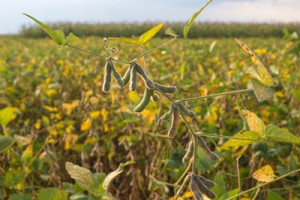Scientists create new variety of low-allergenic soybean
- Like
- Digg
- Del
- Tumblr
- VKontakte
- Buffer
- Love This
- Odnoklassniki
- Meneame
- Blogger
- Amazon
- Yahoo Mail
- Gmail
- AOL
- Newsvine
- HackerNews
- Evernote
- MySpace
- Mail.ru
- Viadeo
- Line
- Comments
- Yummly
- SMS
- Viber
- Telegram
- Subscribe
- Skype
- Facebook Messenger
- Kakao
- LiveJournal
- Yammer
- Edgar
- Fintel
- Mix
- Instapaper
- Copy Link
Posted: 6 May 2015 | Victoria White | No comments yet
Scientists have created a new soybean with significantly reduced levels of three key proteins responsible for its allergenic and anti-nutritional effects…


Soybean is a major ingredient in many infant formulas, processed foods and livestock feed used for agriculture. However, soybeans contain several allergenic and anti-nutritional proteins that affect soybean use as food and animal feed.


University of Arizona scientists Monica Schmidt and Eliot Herman and University of Illinois scientist Theodore Hymowitz have yielded a new soybean with significantly reduced levels of three key proteins responsible for both its allergenic and anti-nutritional effects.
“We have created a low-allergen and low anti-nutritional inhibitor soybean using conventional breeding methods,” said Herman, a professor in the UA School of Plant Sciences and a member of the BIO5 Institute.
P34 identified as the soybean’s key allergen
Back in 2003, Herman, then at the U.S. Department of Agriculture, and his colleagues addressed P34 as the soybean’s key allergen, and genetically engineered it out of the crop. Although the new soybean may have been less likely to cause allergic reactions, testing was impeded by its transgenic production especially in key applications such as infant formula.
Herman, Schmidt and Hymowitz then set out to create a similar soybean using conventional breeding methods. After screening 16,000 different varieties of soybean for the desired trait, they found one that almost completely lacked the allergen P34. The team stacked the P34 null with two varieties previously identified by Hymowitz that lacked soybean agglutinin and trypsin inhibitors, proteins that are responsible for the soybean’s anti-nutritional effects in livestock and humans.
“We really believed in this goal and wanted to produce an enhanced soybean that could be used,” Herman said. “That became the motivation for using conventional breeding rather than the transgenic approach.”
New soybean variety named “Triple Null”
After nearly a decade of crossbreeding each variety to the soybean reference genome called Williams 82, the team has produced a soybean that lacks most of the P34 and trypsin inhibitor protein, and completely lacks soybean agglutinin. Beyond these characteristics, the soybean is nearly identical to Williams 82. They’ve dubbed the new variety “Triple Null.”
“We think this will be embraced by many, whether they prefer conventional breeding or transgenic methods of food production,” said Schmidt, an assistant professor in the School of Plant Sciences and a member of the BIO5 Institute. “It can be grown organically, with pesticides, and although conventional itself it could be transformed to add other producer or consumer traits.”
In collaboration with scientists at Purdue University, tests are planned to evaluate the efficacy of the low-allergen soybean in swine. The Purdue team has bred a line of swine that develops a strong allergenic response very similar to that of human infants allergic to soybean formula. The swine studies will enable testing of Triple Null and enable new approaches to mitigate soybean allergies in humans.
“Food allergy is a huge and growing problem for children. In Arizona, teachers are required to undergo training in how to respond to an emergency situation where a child has a significant response to an allergen exposure,” Herman explained. “We hope this work will offer a new approach to developing low-allergen foods and help to bend down the curve of growing food allergy.”
Triple Null also has applications for livestock and agriculture with soybean being the primary global input of vegetable protein for animal feed. A growing use of soybean is in aquaculture, which produces more than 50% of consumed seafood, with this number expected to rise to 75% by 2030. Before soybean is used in feed, it must undergo a heating process to eliminate anti-nutritional proteins such as trypsin inhibitors and soybean agglutinin that add to cost — the very components that Herman, Schmidt and Hymowitz have effectively eliminated.
By pre-emptively knocking out the anti-nutritional components of soybean, the researchers hope Triple Null can eliminate the need for extra processing and make creation of animal feed more efficient, potentially developing a raw soybean as animal feed.
The work described is published in the journal Plant Breeding.





